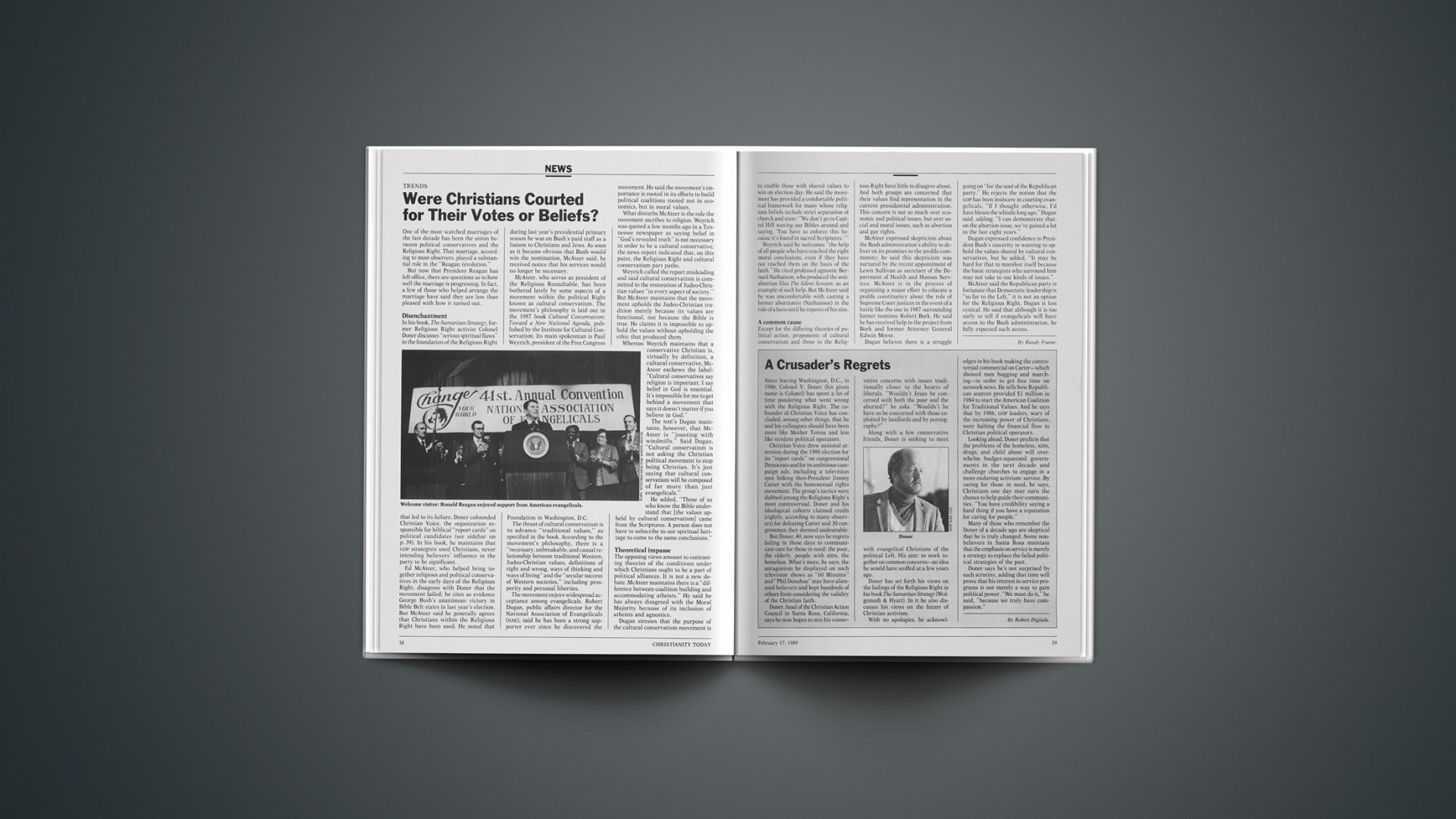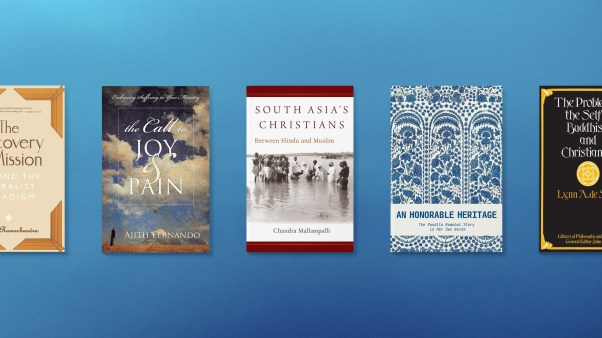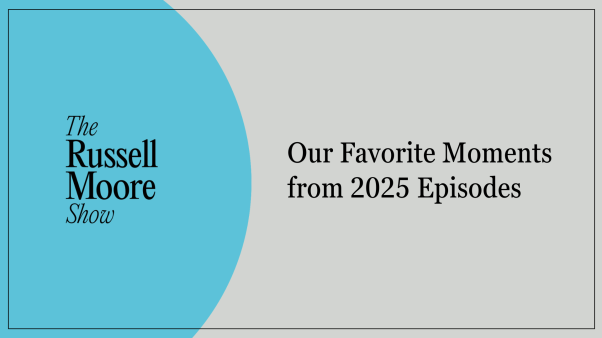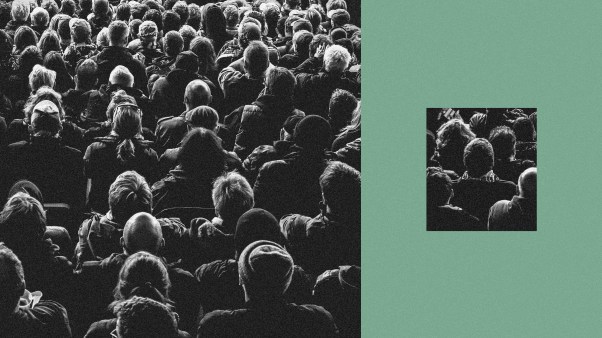The recent flareup of racial violence in Miami’s predominantly black Overtown and Liberty City neighborhoods left civic and church leaders asking some hard questions.
“The first thing that ran through my mind after the rioting was, I haven’t done enough,’ ” said black pastor Henry Nevin of the 600-member Saint John’s Baptist Church in Overtown.
Winston Rudolph, pastor of Mount Zion Baptist Church, also in Overtown, said, “Any time you have pockets of poverty like this, problems are bound to happen.”
But Jimmie Brown, a police major and commander of Dade County’s Central District where much of the violence took place, said it’s not fair to blame all the violence on poverty. “I hear poverty this and poverty that,” Brown said. “But many of those people were frequent offenders who would have been arrested anyway.” According to Brown, background checks of 106 of the detainees revealed more than 1,000 total past arrests. “These were not the people out looking for jobs,” said Brown of the alleged looters.
However, the violence does present a real challenge to the city’s churches, he said. “When people truly have Christ’s agape love, they won’t do these kinds of things.” He said the church in Miami has largely failed in creating the kind of environment where love can develop.
Unusual Problems
While other U.S. cities also have large black populations and poverty, Miami’s situation may be different. Several of Miami’s evangelical leaders tried to explain those differences:
Poverty. Thousands of Cuban and other immigrants have gotten ahead in Miami and Dade County, but blacks remain at the bottom of the economic ladder. The poverty rate for Dade County blacks is 35 percent, and their unemployment rate is twice as high as that for whites. Blacks lack the entrepreneurial skills of the Cubans, said Mount Zion’s Rudolph, and have been hampered by “institutional racism.”
Drugs. Miami is the front door through which cocaine enters the U.S. from Latin America. A recent Miami Herald survey turned up more than 110 Dade County street corners where crack cocaine is sold. The city’s black community (and particularly its youth and single mothers) is hardest hit.
Rudolph said his church asked Miami’s police chief to put a watch around his church building, because cocaine dealers in limousines come right onto the church grounds. “Every time you see a limousine you can’t believe it’s a wedding or a funeral,” he said.
Political structures. Most agree that blacks do not have an effective voice in municipal affairs. Clyde Judson, a black architect and active evangelical layman, said, “Other cities have been more successful in bringing their citizens into the mainstream. We need to insure proper political balance. People need to feel like they are fairly represented. We continually hear people saying, ‘We ask you to do stuff, and nobody does anything.’ ”
Racial tensions. Last month’s racial tensions may have owed partly to the new influx of Nicaraguan refugees. Some 300 to 600 were arriving each week. And estimates of 100,000 Nicaraguans moving to Dade County just during 1989 no longer sound unrealistic.
The Nicaraguans have earned a reputation as hard workers, and they have been well received by the Cuban community who see them as fellow fugitives from Marxist dictatorships. And blacks see the foreigners as getting unfair advantages.
“The blacks hear about the Nicaraguans being offered jobs paying $5 an hour,” said Miami Herald religion reporter Bea Hines, “when there are a lot of welfare mothers who can’t make over $3.85.”
Hispanics make up about 43 percent of Dade County’s two million population, making them the largest racial group. The vast majority of Latins come from Cuba, and black leaders frequently charge that the Cuban community has turned its back on them.
Cuban-born pastor and writer Marcos Antonio Ramos of Miami acknowledged that Cubans “have to do more to build bridges with the blacks.” He said the tensions have been growing ever since the 1960s and particularly with the arrival of 120,000 Cubans in the 1980 Mariel boat lift.
Positive Signs
Increasingly, local church leaders are bringing together Christians from the different ethnic groups. Area pastor Jose Hernandez, for instance, has helped lead a series of three local triethnic “We Are One” church rallies in which black, Hispanic, and Anglo believers have gathered in the same church for worship. “It’s just a beginning,” said Ramos, who also helps with the rallies.
Several years ago, about 30 key Christian leaders, representing the city’s various ethnic communities, formed the Coalition. They meet once monthly for breakfast, and they seek to be catalysts and networkers in the church and community.
“Basically, the Coalition helps us learn about our community and its needs,” said W. Scott Nyborg of the Miami-based Latin America Mission and prime mover behind the Coalition.
The Coalition held its regularly scheduled meeting on the morning after the police shooting in Overtown that touched off the violence. Some of the black Coalition members shared their hurt, Nyborg said, calling the meeting “a very moving experience.”
In addition, some black churches have started projects to meet their communities’ needs. Henry Nevin, a Jamaican native with an import business in Philadelphia before becoming pastor of Saint John’s in Overtown, started the Saint John’s Community Development Corporation in order to build houses for low-income families.
Two days after the shooting, Nevin called a prayer meeting at his church. “You should have been there,” he said in an interview. “We had Hispanic pastors, white pastors, and black pastors. The pastors were together.”
All things considered, Miami has done remarkably well, local leaders say. “I’m totally optimistic,” said pastor-writer Ramos. “The city is not deteriorating.”
Meanwhile, black leaders and others said the city’s image cannot compare in importance to the deep hurts and poverty felt by Miami’s blacks. If anything, the nationwide attention given the disturbances may help refocus attention on Miami blacks’ prevailing needs.
Whether the city’s blacks will fully join the multiethnic mainstream will depend greatly on the churches’ involvement.
Said pastor and police commander Brown, “We’re all in this together. It’s a challenge for the church to be all the things it should be. I keep going back to what Dr. King told his wife, Coretta: ‘Can you imagine what kind of revolution we would have in this country if everyone practiced the teachings of Jesus?’ ”
By John Maust in Miami.










